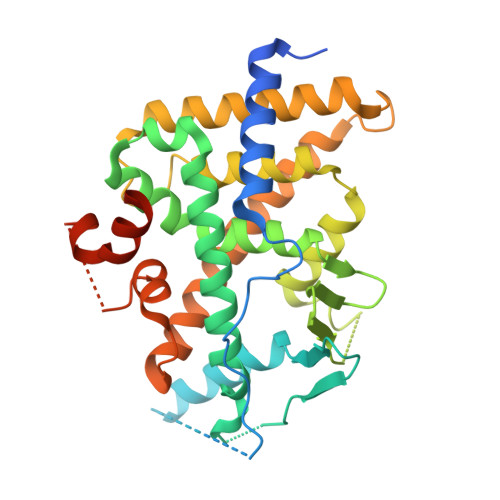Chemical manipulation of an activation/inhibition switch in the nuclear receptor PXR.
Garcia-Maldonado, E., Huber, A.D., Chai, S.C., Nithianantham, S., Li, Y., Wu, J., Poudel, S., Miller, D.J., Seetharaman, J., Chen, T.(2024) Nat Commun 15: 4054-4054
- PubMed: 38744881
- DOI: https://doi.org/10.1038/s41467-024-48472-1
- Primary Citation of Related Structures:
8SVN, 8SVO, 8SVP, 8SVQ, 8SVR, 8SVS, 8SVT, 8SVU, 8SVX - PubMed Abstract:
Nuclear receptors are ligand-activated transcription factors that can often be useful drug targets. Unfortunately, ligand promiscuity leads to two-thirds of receptors remaining clinically untargeted. PXR is a nuclear receptor that can be activated by diverse compounds to elevate metabolism, negatively impacting drug efficacy and safety. This presents a barrier to drug development because compounds designed to target other proteins must avoid PXR activation while retaining potency for the desired target. This problem could be avoided by using PXR antagonists, but these compounds are rare, and their molecular mechanisms remain unknown. Here, we report structurally related PXR-selective agonists and antagonists and their corresponding co-crystal structures to describe mechanisms of antagonism and selectivity. Structural and computational approaches show that antagonists induce PXR conformational changes incompatible with transcriptional coactivator recruitment. These results guide the design of compounds with predictable agonist/antagonist activities and bolster efforts to generate antagonists to prevent PXR activation interfering with other drugs.
Organizational Affiliation:
Department of Chemical Biology and Therapeutics, St. Jude Children's Research Hospital, 262 Danny Thomas Place, Memphis, TN, 38105, USA.















